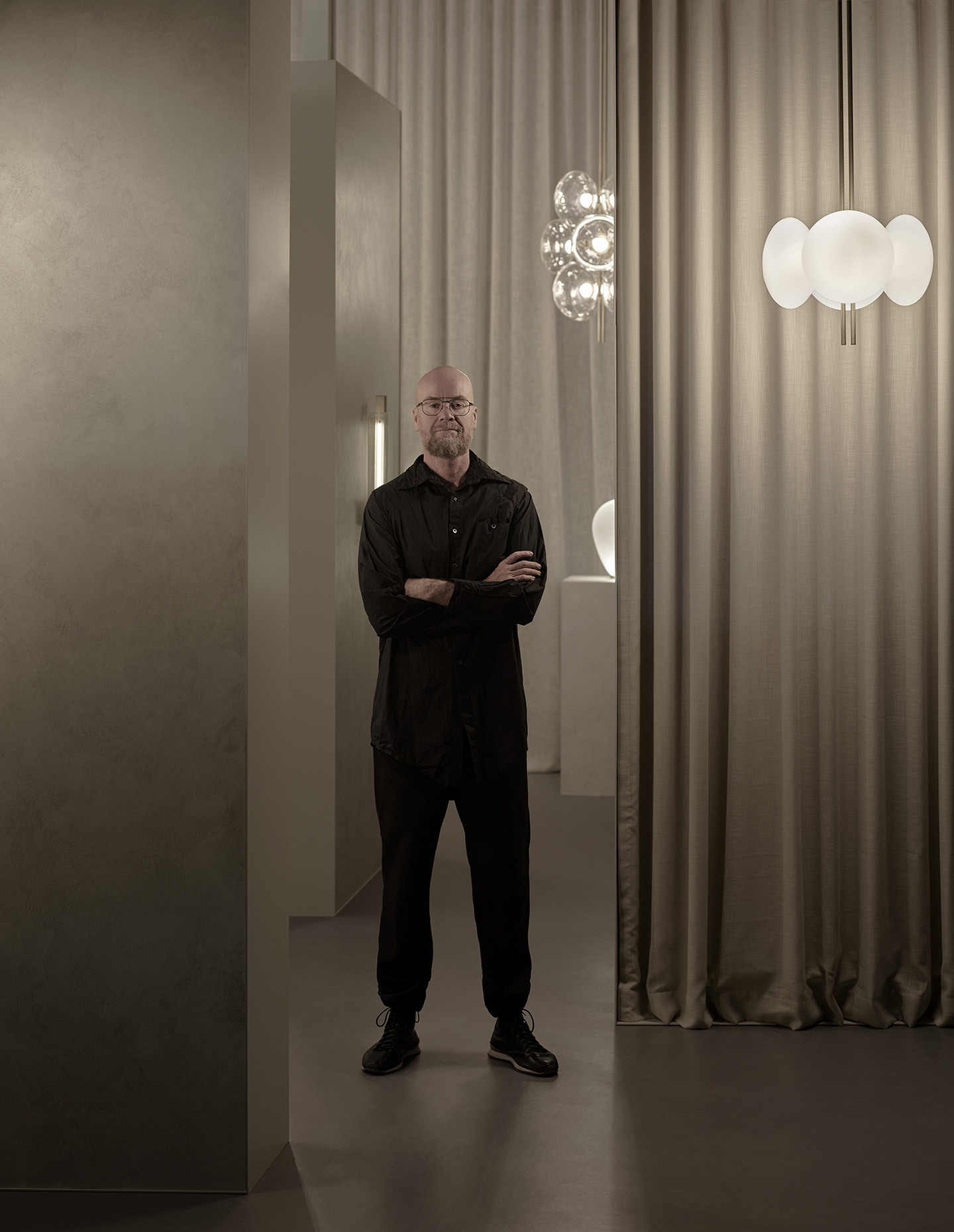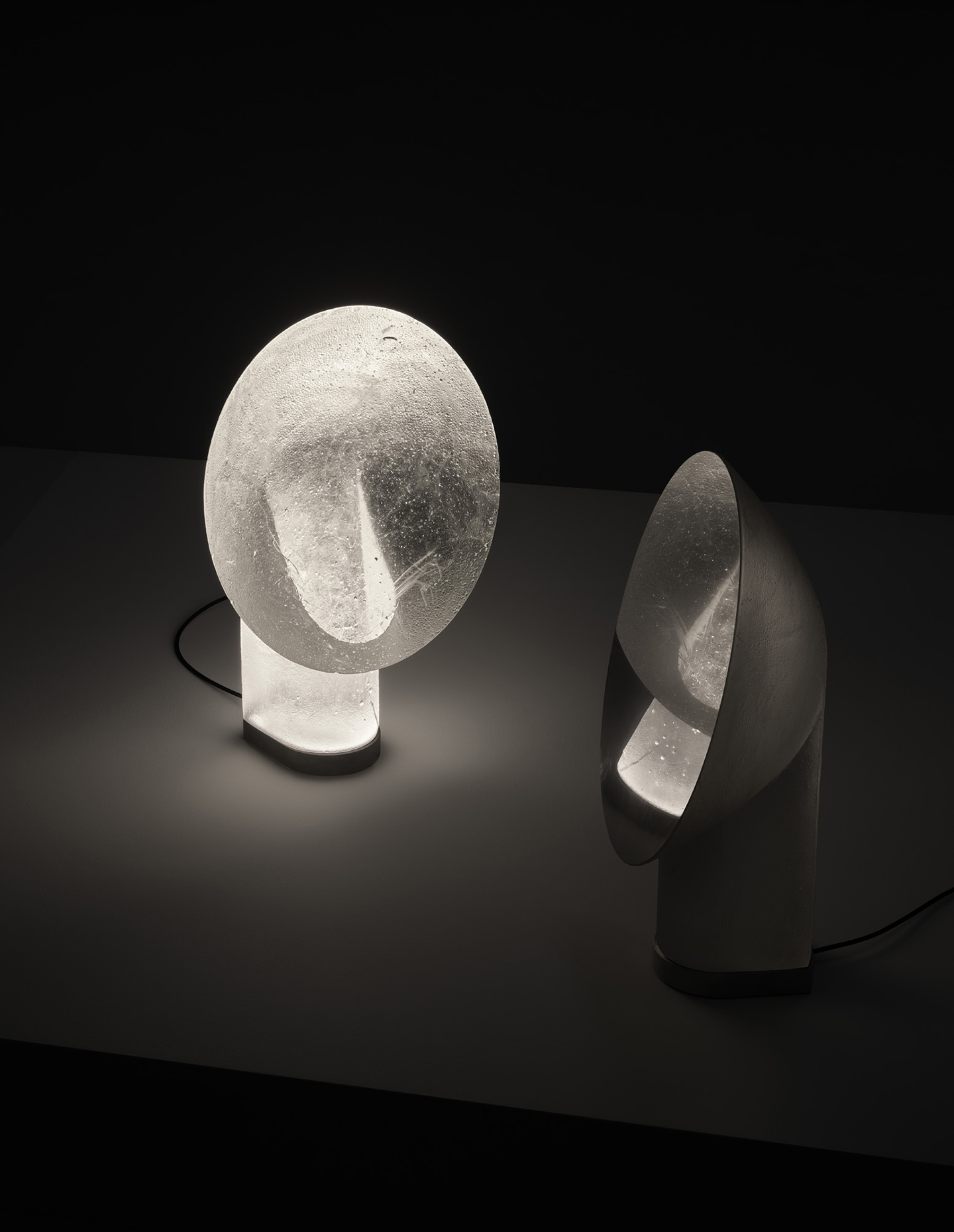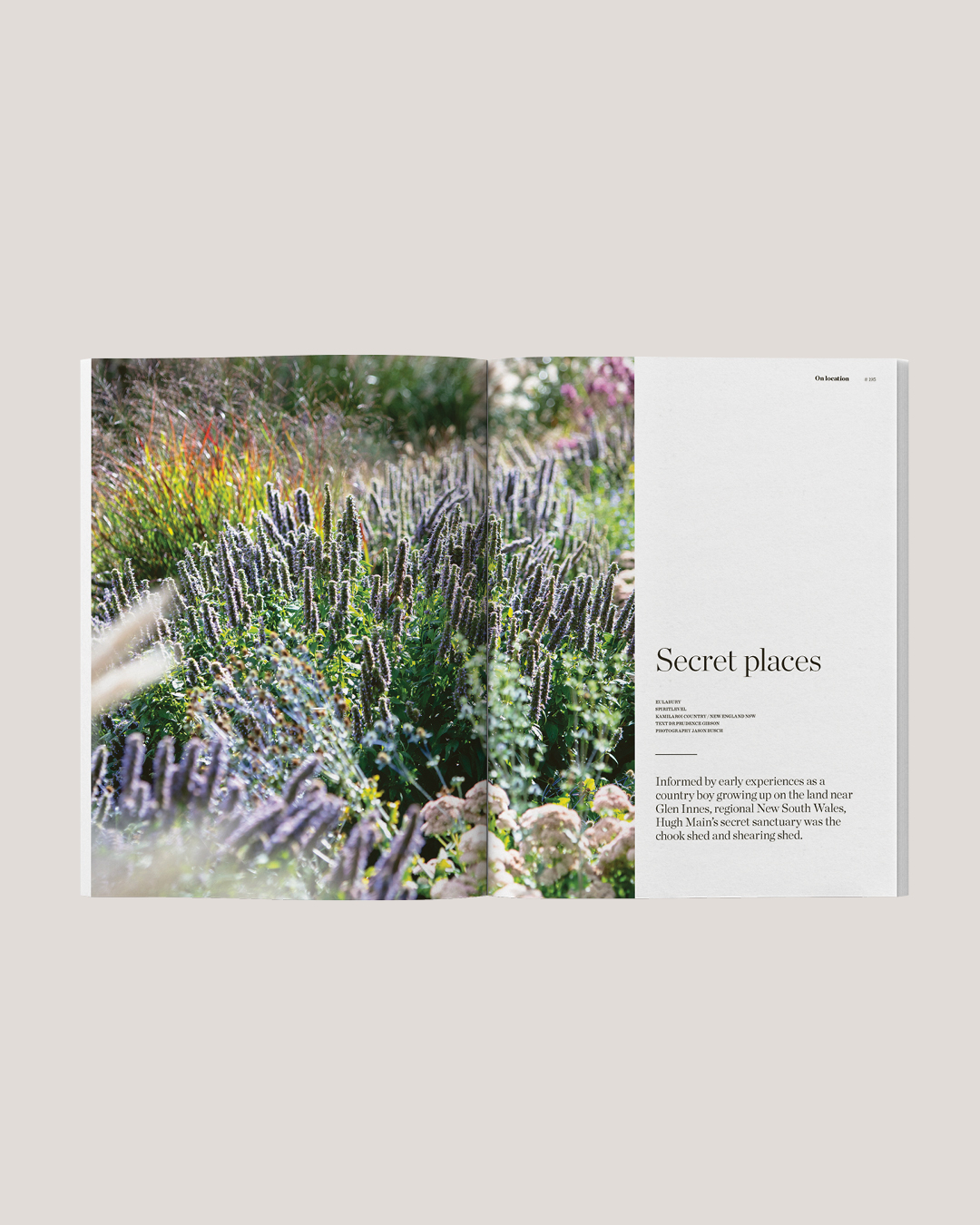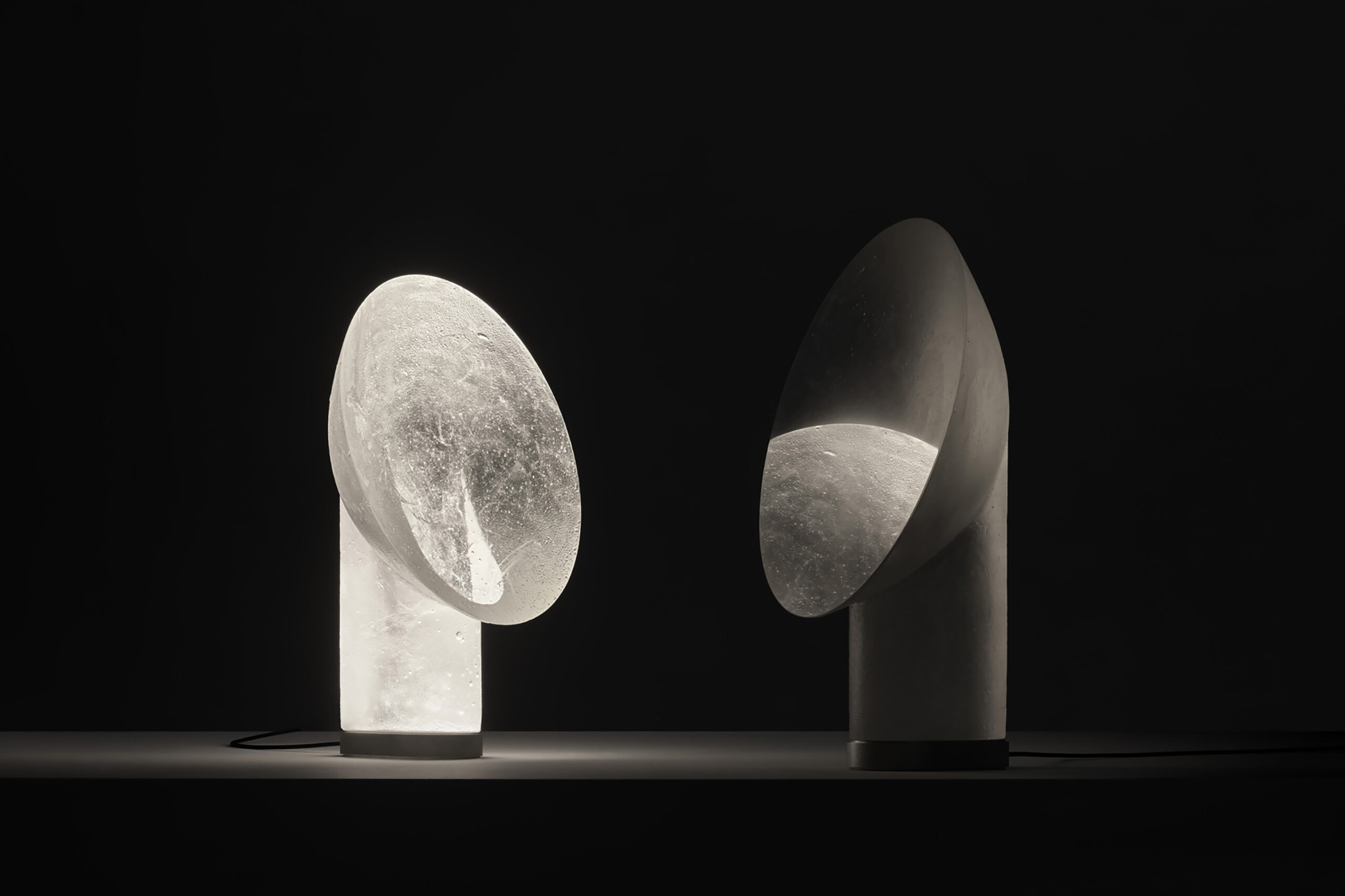Timothy Alouani-Roby: How did you choose this historic city site and what are some of its special qualities?
Ross Gardam: I came last year to Milan Design Week to find a space and obviously to absorb everything I could. In the off year that we show, it’s great to actually see things. I found this space and I think it was in June we signed off on it, and then one of the team came over to see the space. We started designing the stand to fit within the pieces that we created, but also to stand within the space. We couldn’t touch the walls or the ceiling.
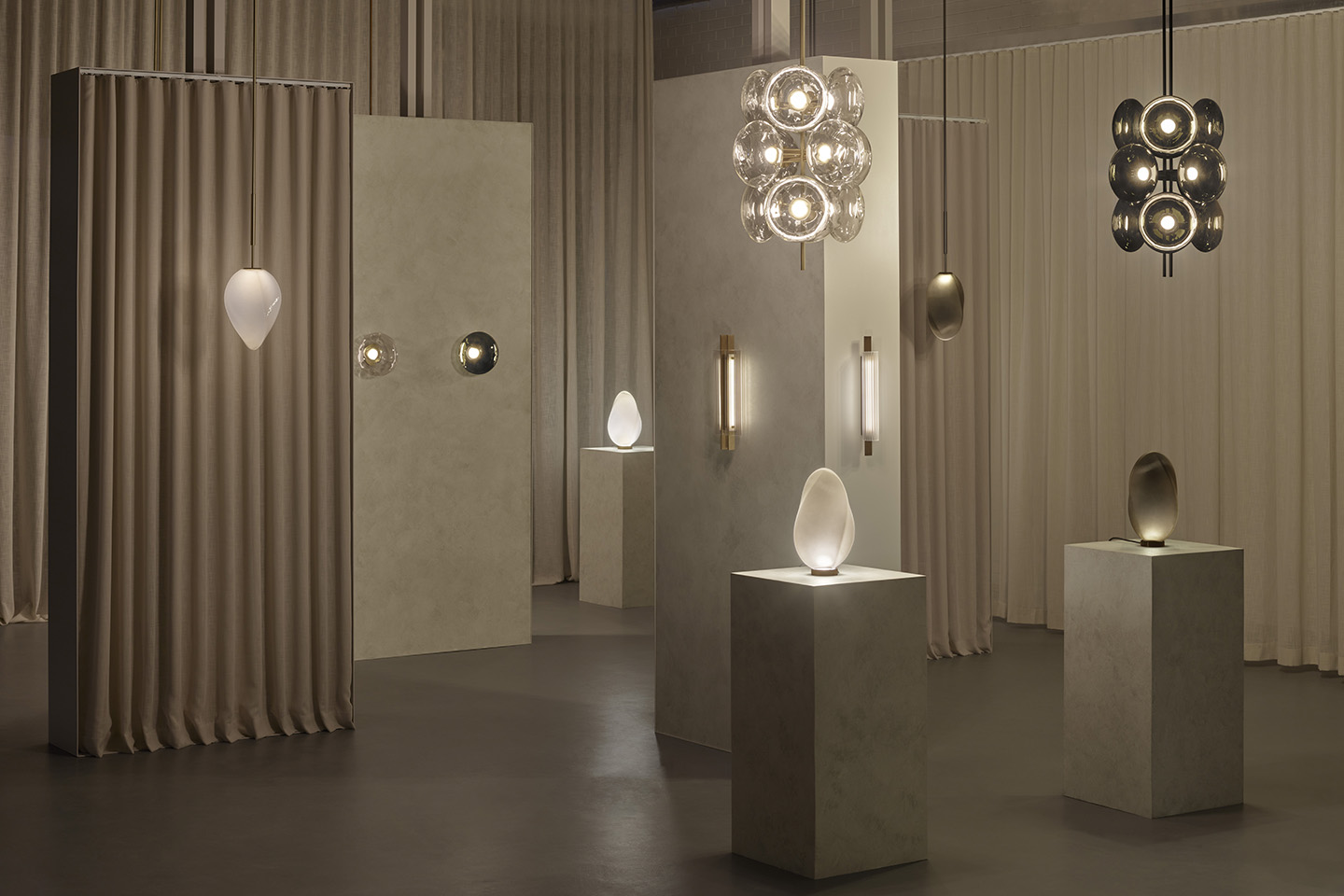
What are some of the pieces on show?
This is a new piece we’ve created called Solace. It forms it as a desk lamp or as a pendant and comes in three different finishes. It’s mouth-blown by Liam Fleming, a South Australian glass artist, and it’s got a beautiful chill texture to the glass. It gives it a kind of… textured personality.
[The hanging iteration] is paired with a solid brass bar and this has got a black patina on it as well. We do three different patina finishes.
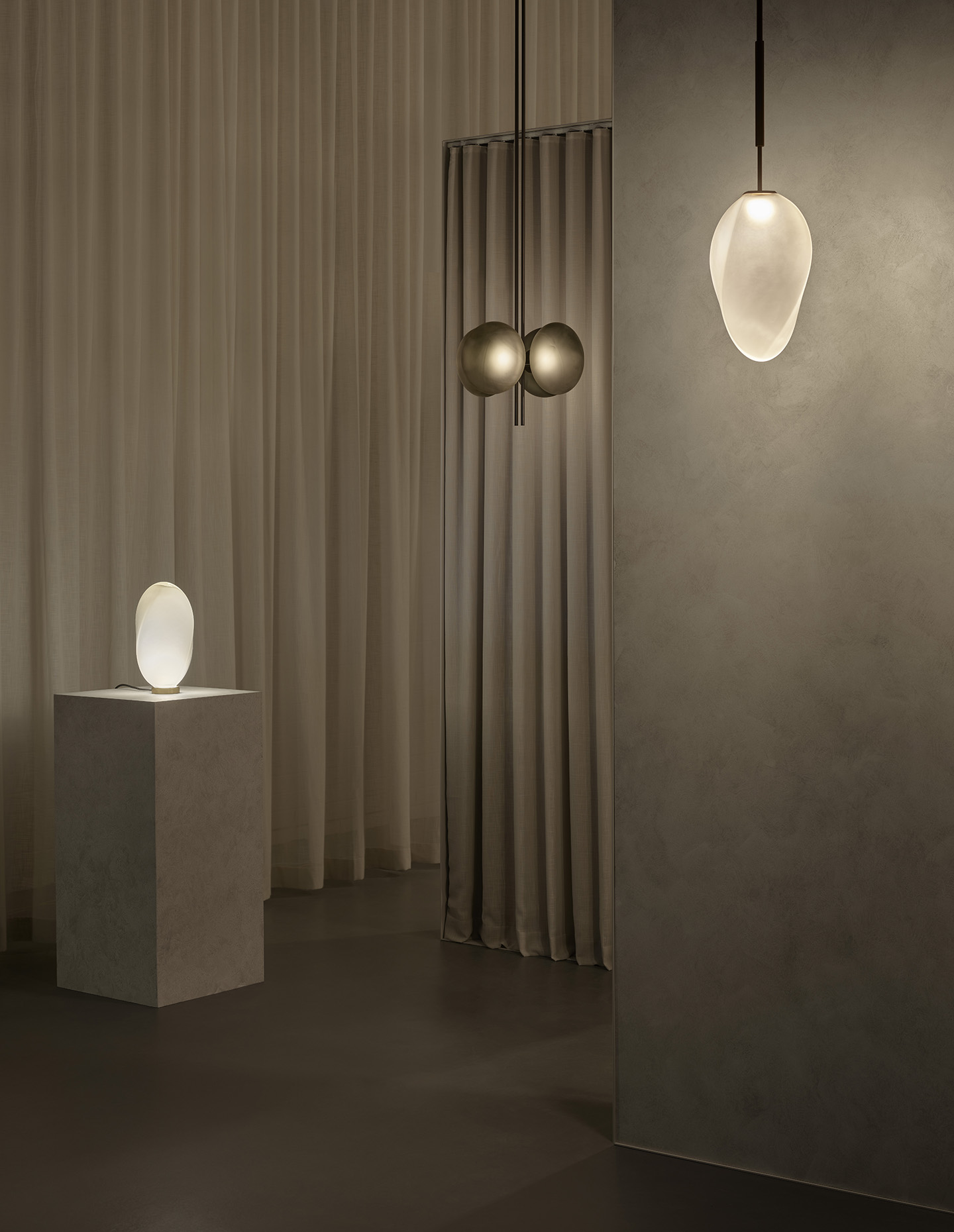
How have you integrated the soft fabrics and even the vinyl on the window into the space? Is it all about playing with light and texture?
Yeah, it started off as quite a brutalist, monolithic structure as a concept and then we slowly pared it back to kind of introduce a softer material, to mimic more an interior feel. We first showed this [piece on the wall] two years ago in Milan, at our site just around the corner. This is called Volant. We showed the chandelier version, then we released the wall light at Melbourne Design Week last year. We hadn’t shown it internationally, so we thought we’d sneak it into the exhibition [in Milan].
And this piece is called Aeris and it’s using, once again, mouth-blown glass by Liam and the team, paired with a brass fixture which has this duality of interlinking brass when you look up through the piece.
Are we looking at finished pieces or is there a continued development and experimentation?
These are all finished pieces – we’ve curated quite a concise little family here. There’s always room for exploring different combinations with clients but we’ve got a little family sorted out.
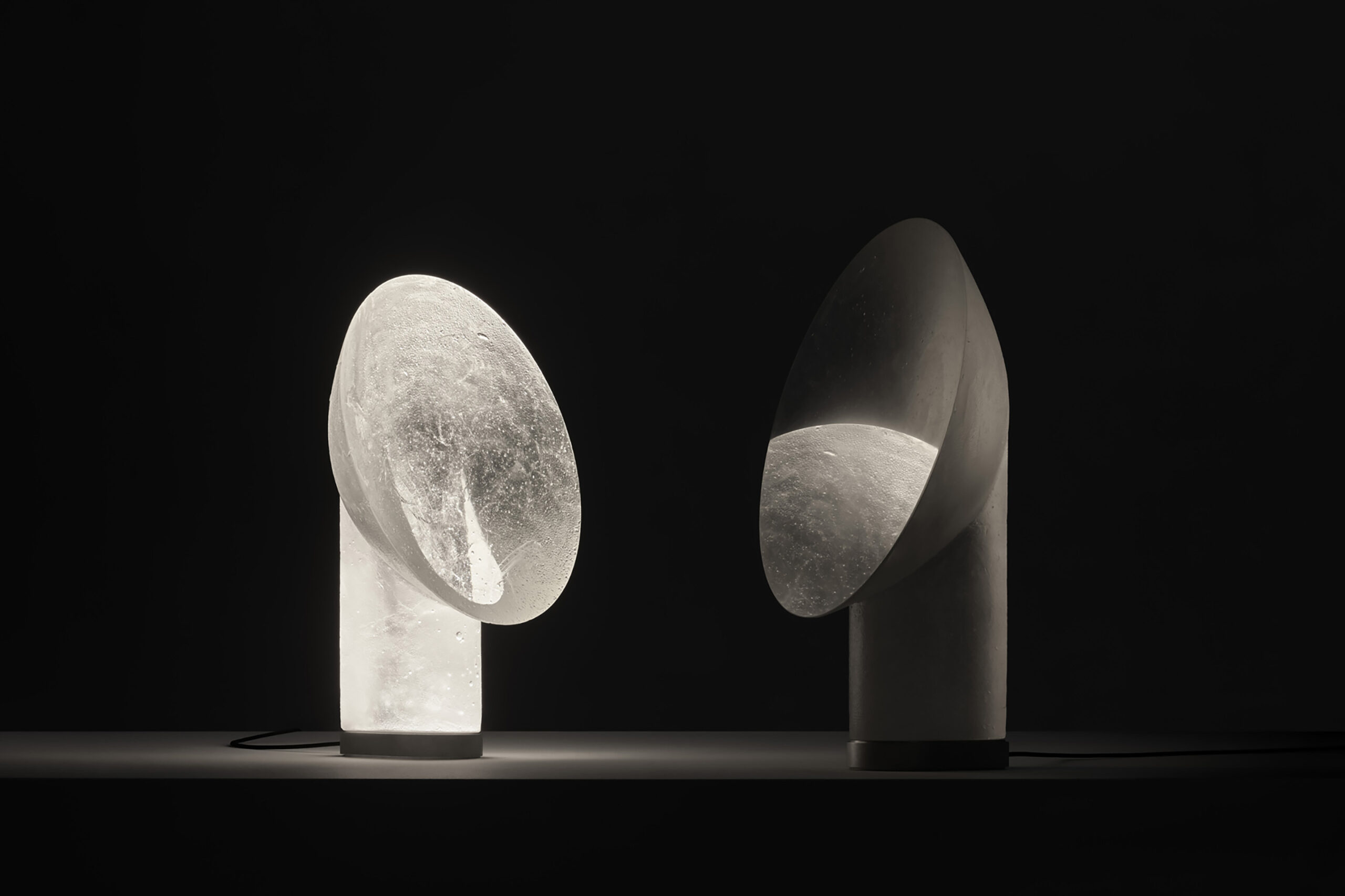
What about the working process?
In terms of the process [for Relic], we work with Peter Kovacsy, a Western Australian glass artist. His work is mainly formed on large-format sculptures, and we collaborated with him two years ago with Vestige (which is over in the corner). This is Vestige’slittle sister, that’s what you could say – and it’s called Relic. It’s obviously the same process and a similarly inspired form, but I wanted to open up the face so that you could get drawn into the piece a little bit more. Then the cast crystal glass, when it’s packed into the mould, melts and forms. You can see these little ghostings internally – it talks to the process of how it’s made.

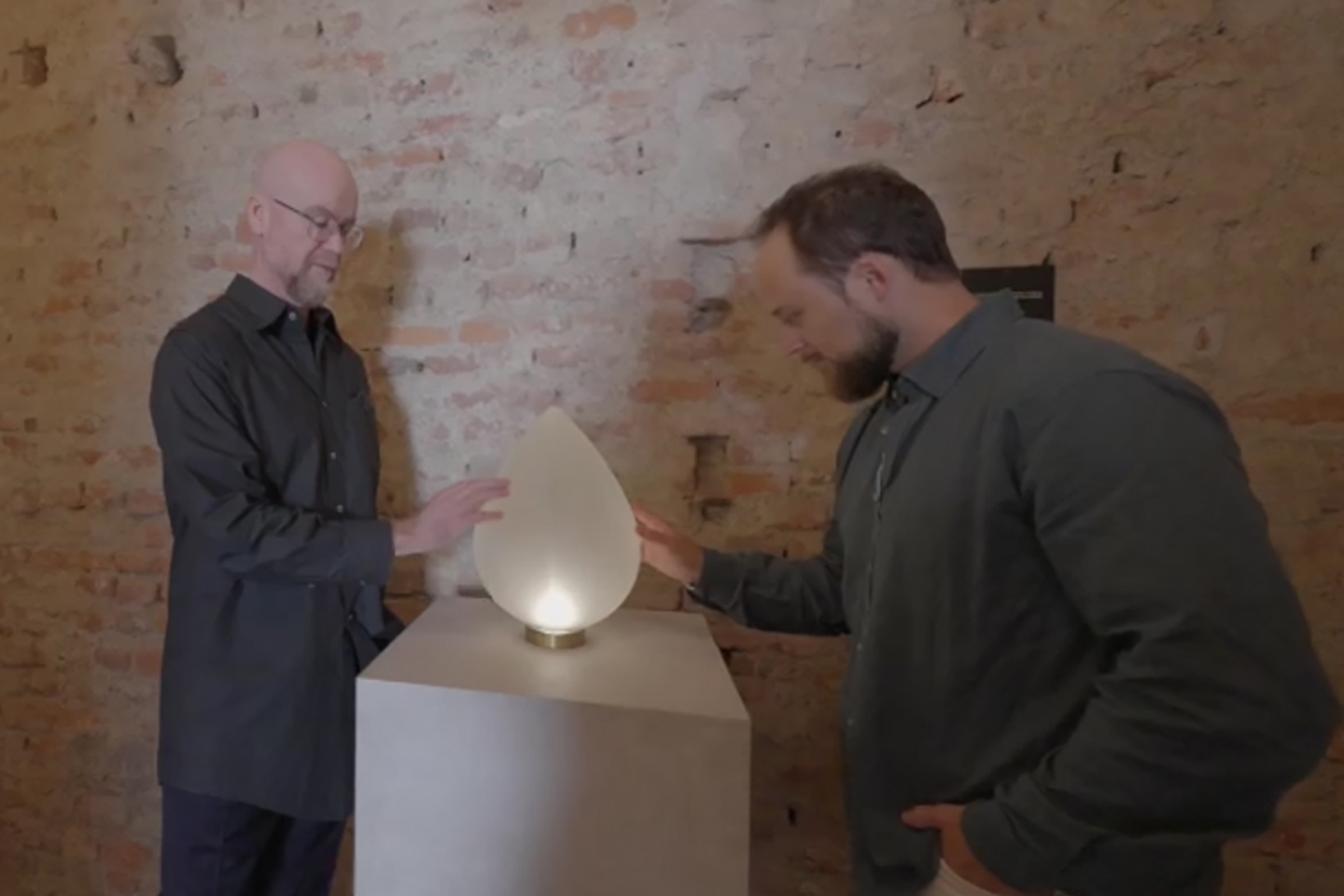
Are there any favourite little moments or tiny details on show that you’re especially proud of?
I think the moment by the window is pretty lovely, celebrating the architecture of the space and the pieces involved in it. I love the little connection in Aeris, a little crossover detail; it’s kind of subtle and you can discover it as you move around.
